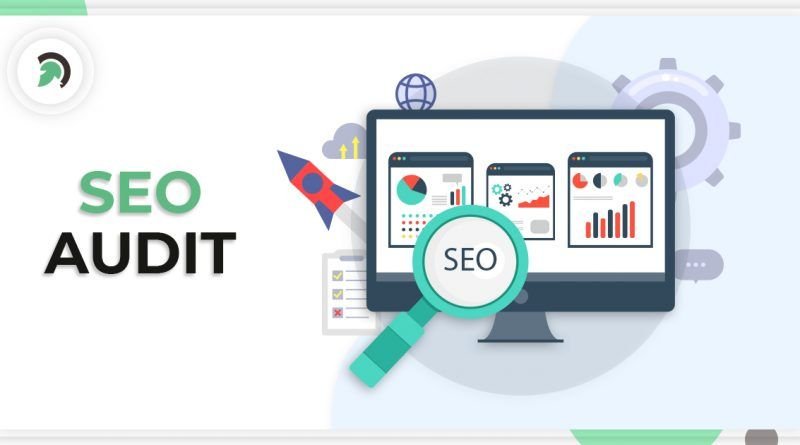technical SEO audit tools for websites: This guide provides a solution-based approach to help clients leverage technical SEO audit tools to optimize their websites for better search engine performance. By breaking down the process into manageable components, identifying common issues, and offering actionable steps, clients can address technical SEO challenges effectively. Real-world examples, prevention tips, and a clear call to action ensure sustainable results.
The Problem: Technical SEO Issues Hindering Website Performance
Technical SEO involves optimizing a website’s backend structure to ensure search engines can crawl, index, and rank it effectively. Without proper technical SEO, websites may face issues like poor rankings, low organic traffic, or user experience problems. Technical SEO audit tools help identify and resolve these issues, but many clients struggle to select and use the right tools or interpret their findings.
Breaking Down the Problem into Components
-
Crawlability Issues: Search engine bots cannot access certain pages due to restrictions in robots.txt, broken links, or server errors.
-
Indexability Problems: Pages are not indexed by search engines because of noindex tags, canonicalization issues, or duplicate content.
-
Site Speed and Performance: Slow-loading pages or unoptimized resources (e.g., large images, render-blocking JavaScript) harm user experience and rankings.
-
Mobile Usability: Websites not optimized for mobile devices risk losing traffic, as mobile-friendliness is a Google ranking factor.
-
Structured Data Errors: Incorrect or missing schema markup prevents rich snippets, reducing click-through rates.
-
Security Issues: Lack of HTTPS or mixed content issues can erode user trust and impact rankings.
Common Causes
-
Misconfigured robots.txt or meta tags: Blocking critical resources or pages unintentionally.
-
Poor site architecture: Orphaned pages or excessive redirects complicating navigation.
-
Outdated technology: Using legacy code or unoptimized CMS plugins.
-
Neglecting mobile optimization: Failing to implement responsive design or test mobile usability.
-
Inadequate maintenance: Not regularly auditing for broken links, duplicate content, or performance issues.
Consequences of Not Addressing Technical SEO Issues

-
Reduced Organic Traffic: Poor crawlability or indexability prevents pages from ranking, leading to fewer visitors.
-
Lower User Engagement: Slow load times or mobile-unfriendly designs increase bounce rates.
-
Lost Revenue Opportunities: Fewer clicks and conversions due to lower visibility or poor user experience.
-
Competitor Advantage: Rivals with optimized sites capture more market share.
-
Penalties from Search Engines: Issues like duplicate content or spammy backlinks may trigger algorithmic penalties.
Actionable Steps to Resolve Technical SEO Issues Using Audit Tools
Below is a step-by-step guide to conducting a technical SEO audit and resolving issues using popular tools. Each step includes recommended tools, strategies, and practical tips.
Step 1: Set Up and Select Technical SEO Audit Tools
Objective: Choose reliable tools to analyze your website’s technical health.
-
Tools:
-
Google Search Console (GSC): Free tool for monitoring crawl errors, indexing status, and mobile usability.
-
Screaming Frog SEO Spider: Desktop crawler (free up to 500 URLs) for detailed site analysis.
-
Semrush Site Audit: Comprehensive tool checking over 140 technical issues (free limited plan available).
-
Google PageSpeed Insights: Free tool for analyzing site speed and Core Web Vitals.
-
Lighthouse (Chrome DevTools): Open-source tool for performance and SEO audits.
-
-
Action:
-
Sign up for GSC and verify your website.
-
Download Screaming Frog or configure Semrush for your domain.
-
Ensure access to Google Analytics for traffic data correlation.
-
-
Tip: Combine free tools (GSC, Lighthouse) with paid options (Semrush, Ahrefs) for a holistic view.
Step 2: Audit Crawlability
Objective: Ensure search engines can access all important pages.
-
Tools: Screaming Frog, GSC, Semrush.
-
Actions:
-
Run a crawl with Screaming Frog or Semrush to identify blocked pages.
-
Check robots.txt in GSC’s “robots.txt Tester” to ensure critical resources (CSS, JavaScript, images) are not disallowed.
-
Fix 4xx/5xx errors (e.g., 404s, 500s) by redirecting broken links or restoring pages.
-
Remove unnecessary redirects (301/302 chains) to improve crawl efficiency.
-
-
Example: A retail site found 50% of its product pages were blocked by a misconfigured robots.txt. After updating the file to allow crawling, organic traffic increased by 30% within two months.
-
Tip: Test robots.txt changes using GSC’s tester before deploying.
Step 3: Verify Indexability
Objective: Confirm all relevant pages are indexed by search engines.
-
Tools: GSC, Semrush, Screaming Frog.
-
Actions:
-
Use GSC’s “Pages” report to identify pages marked “Crawled – currently not indexed” or “Excluded.”
-
Check for accidental “noindex” tags or canonicalization issues using Screaming Frog’s “Directives” report.
-
Submit an updated XML sitemap via GSC to prioritize important pages.
-
Resolve duplicate content by implementing canonical tags or 301 redirects.
-
-
Example: A blog discovered a sitewide “noindex” tag was mistakenly added during a redesign, causing a 90% traffic drop. Removing the tag and resubmitting the sitemap restored rankings within weeks.
-
Tip: Use the “site:yourdomain.com” search operator in Google to quickly check indexed pages.
Step 4: Optimize Site Speed and Core Web Vitals
Objective: Improve page load times and user experience metrics.
-
Tools: Google PageSpeed Insights, Lighthouse, GTmetrix.
-
Actions:
-
Run a PageSpeed Insights test for key pages to identify issues like Large Contentful Paint (LCP), Interaction to Next Paint (INP), or Cumulative Layout Shift (CLS).
-
Compress images using tools like TinyPNG or WP Rocket (for WordPress).
-
Enable lazy-loading for off-screen images and minify CSS/JavaScript.
-
Reduce server response time by upgrading hosting or using a CDN (e.g., Cloudflare).
-
-
Example: A travel site optimized hero images and reduced LCP from 4.5s to 1.8s, boosting organic traffic by 278% after content updates.
-
Tip: Prioritize fixes for high-traffic pages to maximize impact.
Step 5: Enhance Mobile Usability
Objective: Ensure the site is fully functional on mobile devices.
-
Tools: GSC’s Mobile Usability Report, Bing’s Mobile Friendliness Test.
-
Actions:
-
Check GSC’s Mobile Usability Report for errors like text too small or clickable elements too close.
-
Test key pages with Bing’s tool to confirm mobile-friendliness.
-
Implement responsive design using CSS media queries or a mobile-first framework.
-
Verify mobile performance with Lighthouse’s mobile audit.
-
-
Example: An e-commerce site fixed mobile navigation issues, reducing bounce rates by 15% and increasing mobile conversions by 20%.
-
Tip: Regularly test mobile usability as device screen sizes evolve.
Step 6: Implement and Validate Structured Data
Objective: Add schema markup to enhance search visibility.
-
Tools: Google’s Rich Results Test, Semrush’s Markup Report.
-
Actions:
-
Identify pages eligible for schema (e.g., products, articles) using Google’s guidelines.
-
Generate JSON-LD markup with tools like Schema.org or Merkle’s Schema Markup Generator.
-
Validate markup with Google’s Rich Results Test to fix errors.
-
Monitor rich snippet performance in GSC’s “Enhancements” report.
-
-
Example: A recipe site added schema markup, earning featured snippets for 40% of its posts, driving a 50% traffic increase.
-
Tip: Use JSON-LD over Microdata for easier implementation.
Step 7: Address Security Issues
Objective: Ensure the site is secure and trusted by users and search engines.
-
Tools: Semrush’s HTTPS Report, Screaming Frog.
-
Actions:
-
Verify HTTPS implementation across all pages using Semrush’s HTTPS Report.
-
Fix mixed content issues (HTTP resources on HTTPS pages) by updating URLs.
-
Renew SSL certificates before expiration to avoid warnings.
-
Monitor GSC’s Security Issues report for malware or hacking alerts.
-
-
Example: A small business site switched to HTTPS and fixed mixed content, improving user trust and rankings by 10 positions.
-
Tip: Set up automatic SSL renewals to prevent lapses.
Step 8: Create an Action Plan and Monitor Progress
Objective: Prioritize fixes and track improvements.
-
Tools: Google Sheets, Semrush, GSC.
-
Actions:
-
Export audit reports and create a matrix in Google Sheets ranking issues by impact (high/low) and effort (easy/complex).
-
Assign tasks to team members with deadlines (e.g., fix broken links in 1 week).
-
Monitor GSC and Google Analytics for changes in crawl stats, indexing, and traffic.
-
Schedule follow-up audits every 3–6 months.
-
-
Tip: Focus on quick wins (e.g., fixing 404s) to build momentum.
Real-World Case Study
Client: A mid-sized travel agency struggling with declining organic traffic.
-
Problem: A Semrush audit revealed 200 broken links, slow page speeds, and missing schema markup.
-
Solution:
-
Fixed broken links using Screaming Frog’s redirect feature.
-
Optimized images with TinyPNG, reducing LCP by 2 seconds.
-
Added FAQ schema to service pages, earning rich snippets.
-
-
Results: Organic traffic increased by 278% in 12 months, with 30% of pages ranking in the top 5.
-
Lesson: Combining technical fixes with content enhancements amplifies SEO impact.
Prevention Tips for Future Technical SEO Issues
-
Schedule Regular Audits: Run technical SEO audits quarterly using Semrush or Screaming Frog to catch issues early.
-
Monitor GSC Alerts: Set up notifications for crawl errors or security issues.
-
Use Version Control: Document changes to robots.txt, sitemaps, or code to avoid accidental errors.
-
Train Your Team: Educate content creators on SEO best practices, like optimizing images or avoiding duplicate content.
-
Stay Updated: Follow SEO blogs (e.g., Moz, Backlinko) to adapt to algorithm changes.
Next Steps and Call to Action
-
Start Your Audit Today: Sign up for Google Search Console and Semrush’s free trial to begin scanning your site.
-
Prioritize Quick Wins: Focus on fixing high-impact issues like broken links or slow pages within the next week.
-
Collaborate with Experts: If technical fixes are complex, consult a developer or SEO agency.
-
Track Progress: Monitor traffic and rankings in Google Analytics over the next 30 days.
Take Action Now: Don’t let technical SEO issues hold your website back. Run a free audit with Semrush or GSC today and start optimizing for higher rankings and more traffic. Visit https://x.ai/grok for additional resources or contact an SEO professional to guide your journey!
